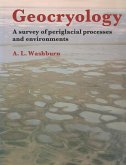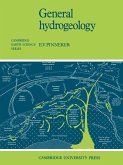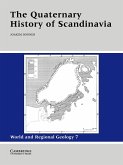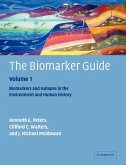A wide-ranging and up-to-date review of permafrost science, unique in presenting the Russian viewpoint.
In the cold regions, freezing of the ground presents major geotechnical and environmental challenges. In Russia, oil and gas gives these regions special economic and geopolitical significance. After glasnost, it became evident that research there was more comprehensive but the problems far greater than elsewhere. This translation of a wide-ranging account of the effects of freezing and their importance for geotechnical undertakings, has been prepared by an international team of specialists. It makes available a uniquely readable and technically accurate review, especially valuable to international organisations and those involved in joint ventures. The English edition of the 16-sheet geocryological map of Russian has been prepared by the same international team. For more details please see: www.freezingground.org/map or contact Scott Polar Research Institute, (Attn. Prof. P. J. Williams), Lensfield Rd., Cambridge, CB2 1ER, UK. - or e-mail: pjw1005@cus.cam.ac.uk.
Table of content:
Introduction; Part I. Processes in Freezing, Frozen and Thawing Ground: 1. Thermal-physical processes in freezing and thawing ground; 2. Water transfer and ice formation in soils; 3. Physical-chemical and mechanical processes in freezing and thawing ground; 4. Structure and texture of freezing and thawing soils; 5. Cryogenic geological processes and phenomena; Part II. Composition, Cryogenic Structure and Properties of Frozen Rocks: 6. Formation of sedimentary materials in the permafrost regions (cryolithogenesis); 7. Composition and structure of frozen earth materials; 8. Properties of frozen soils; 9. Characteristics of the basic genetic types of frozen ground; Part III. Formation and Development of the Frozen Strata and Layers of Seasonal Freezing and Thawing: 10. Thermodynamic and climatic conditions for formation of the frozen layers; 11. Seasonal freezing and thawing of ground; 12. Development of the temperature regime and the thickness of the permafrost; 13. Taliks and groundwater in the permafrost zone; Part IV. Regional Features and Evolution of Permafrost: 14. Permafrost evolution in the Earth's history; 15. Zonal and regional features of present-day geocryological conditions in the territories of the former USSR; 16. Principles and methods for regional geocryological investigations; Part V. Economic Development of the Permafrost Regions: 17. The effect of different types of development on the natural geocryological environment; 18. Ensuring the stability of engineering structures in the permafrost regions; 19. Engineering geology in support of design, construction and operation of structures in the permafrost regions; Index.
In the cold regions, freezing of the ground presents major geotechnical and environmental challenges. In Russia, oil and gas gives these regions special economic and geopolitical significance. After glasnost, it became evident that research there was more comprehensive but the problems far greater than elsewhere. This translation of a wide-ranging account of the effects of freezing and their importance for geotechnical undertakings, has been prepared by an international team of specialists. It makes available a uniquely readable and technically accurate review, especially valuable to international organisations and those involved in joint ventures. The English edition of the 16-sheet geocryological map of Russian has been prepared by the same international team. For more details please see: www.freezingground.org/map or contact Scott Polar Research Institute, (Attn. Prof. P. J. Williams), Lensfield Rd., Cambridge, CB2 1ER, UK. - or e-mail: pjw1005@cus.cam.ac.uk.
Table of content:
Introduction; Part I. Processes in Freezing, Frozen and Thawing Ground: 1. Thermal-physical processes in freezing and thawing ground; 2. Water transfer and ice formation in soils; 3. Physical-chemical and mechanical processes in freezing and thawing ground; 4. Structure and texture of freezing and thawing soils; 5. Cryogenic geological processes and phenomena; Part II. Composition, Cryogenic Structure and Properties of Frozen Rocks: 6. Formation of sedimentary materials in the permafrost regions (cryolithogenesis); 7. Composition and structure of frozen earth materials; 8. Properties of frozen soils; 9. Characteristics of the basic genetic types of frozen ground; Part III. Formation and Development of the Frozen Strata and Layers of Seasonal Freezing and Thawing: 10. Thermodynamic and climatic conditions for formation of the frozen layers; 11. Seasonal freezing and thawing of ground; 12. Development of the temperature regime and the thickness of the permafrost; 13. Taliks and groundwater in the permafrost zone; Part IV. Regional Features and Evolution of Permafrost: 14. Permafrost evolution in the Earth's history; 15. Zonal and regional features of present-day geocryological conditions in the territories of the former USSR; 16. Principles and methods for regional geocryological investigations; Part V. Economic Development of the Permafrost Regions: 17. The effect of different types of development on the natural geocryological environment; 18. Ensuring the stability of engineering structures in the permafrost regions; 19. Engineering geology in support of design, construction and operation of structures in the permafrost regions; Index.








